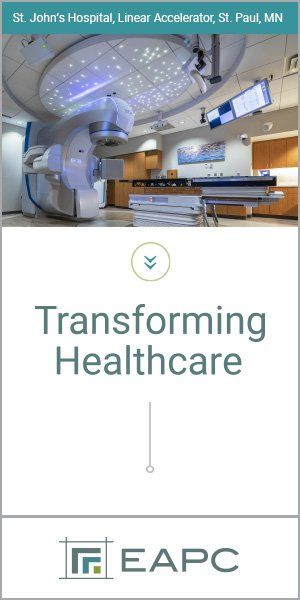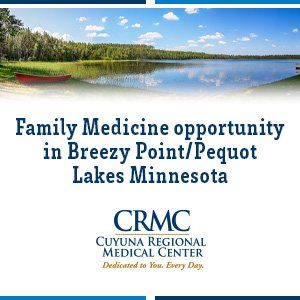n light of recent executive actions with a direct impact on patient care, the American Heart Association recently issued a presidential advisory that lays out five principles to optimize the future of U.S. biomedical research through the National Institutes of Health (NIH). The advisory cites the NIH’s critical importance as the world’s premier biomedical research organization and cautions against abrupt, haphazard and disruptive measures that will have unintended consequences for public health. The advisory adds that the NIH would be strengthened by thoughtfully and collaboratively adapting our national research enterprise to better meet today’s rapidly evolving heath needs.
Cover Two
The Future of Biomedical Research
A new presidential advisory from the American Heart Association
BY Joseph C. Wu, MD, PhD, FAHA
Emphasizing that a strong National Institutes of Health is critical for the future of biomedical research and innovation, the advisory stresses both medical and economic benefits of NIH-funded research and offers principles to optimize the NIH’s role as the world’s preeminent medical research entity.
The American Heart Association is a relentless force for a world of longer, healthier lives. Dedicated to ensuring equitable health in all communities, the organization has been a leading source of health information for more than 100 years. Supported by more than 35 million volunteers globally, we fund groundbreaking research, advocate for the public’s health, and provide critical resources to save and improve lives affected by cardiovascular disease and stroke. By driving breakthroughs and implementing proven solutions in science, policy and care, we work tirelessly to advance health and transform lives every day.
Groundbreaking achievements in science and medicine have contributed to reductions in cardiovascular disease (CVD) and stroke mortality over several decades. Many of these advances were enabled by strong bipartisan support in Congress for investments in the National Institutes of Health (NIH), the global leader in biomedical research.
The future of America’s global leadership in research is at risk.
Research at Risk
But the future of America’s global leadership in research is at risk. The state of NIH funding and the nation’s biomedical research workforce are the subject of intensive discussion among federal elected officials and the medical research community. Our new presidential advisory is devoted to a world of healthier lives for all, to strengthening the future of U.S. biomedical research and to preserving the NIH’s leading role in accelerating scientific discovery that yields medical breakthroughs and economic benefits nationwide. The advisory, Principles for the Future of Biomedical Research in the United States and Optimizing the National Institutes of Health, was prepared over the past several months by a volunteer committee of research leaders and published recently in the association’s flagship scientific journal Circulation. Now more than ever, we must recognize that our country’s leadership in groundbreaking medical research spurs scientific innovation, improves public health and creates new innovations that save and improve lives nationwide. There is an imperative to avoid unnecessary disruption that threatens our global leadership as we look to adapt our nation’s research enterprise to better meet today’s rapidly evolving health needs. We must be thoughtful and deliberate in considering opportunities to improve efficiency and transparency to ensure the NIH continues as the world’s preeminent biomedical research entity.
The public investment in the NIH produces significant economic returns, including supporting more than 400,000 jobs and roughly $93 billion in economic activity in the U.S. Every $1 increase in publicly funded research from the NIH leads to an additional $8.38 of industry research and development investment. Public investment in disease prevention research has the potential to extend the years people live in good health and reduce health care costs. NIH-supported research is also highly productive in terms of patents. For every $100 million of funding, NIH research generates 76 patents, which create opportunities for an estimated $598 million in further R&D. NIH support also furthers the careers of established investigators around the world. To date, 174 scientists either at NIH or whose research was supported by NIH funds have been the sole or shared recipients of 104 Nobel Prizes. Investment in disease prevention research has the potential to extend the years that people live in good health and thus reduce health care costs. This multifaceted return on public investment in biomedical research is significant for our country.
Origins of the NIH
The NIH began in 1887 as a one-room laboratory at the Marine Hospital in Staten Island, New York, with the goal of improving public health. It received official recognition in 1901 when Congress funded a new hygienic laboratory in Washington, D.C. In 1930, the Ransdell Act renamed it the National Institute (singular) of Health and authorized fellowships for basic biological and medical research. The first disease-specific institute, the National Cancer Institute, was established in 1937 in response to growing health concerns, shaping the NIH’s existing structure. In 1940, the NIH moved to Bethesda, Maryland, and the National Cancer Institute began awarding research grants to nonfederal scientists and funding fellowships for young investigators. The Public Health Service Act of 1944 significantly boosted the NIH’s budget, expanded the research grants program beyond the National Cancer Institute and allowed the NIH to conduct clinical research.
With the successful expansion of the NIH budget, voluntary health organizations started encouraging Congress to authorize the creation of disease-specific institutes supporting research on key disease priorities, including mental health, dental disease and heart disease. In 1948, the National Heart Act officially changed the name of the NIH to plural (Institutes). The National Heart, Lung, and Blood Institute and the National Institute of Neurological Disorders and Stroke were established in 1948 and 1950, respectively. The 1970s saw major initiatives against cancer and heart disease, with the National Heart, Blood Vessel, Lung, and Blood Act of 1972 mandating an expanded program for all aspects of heart disease, including hypertension, elevated blood cholesterol levels, stroke, and particular blood diseases such as sickle cell anemia. In the 1980s, congressional actions focused on incentivizing the commercialization of federally funded research through several laws, profoundly reshaping the NIH’s intramural and external research operations. By the 1990s, Congress authorized the Foundation for NIH to support intramural scientists through funding and training and to encourage public-private partnerships.More recently, Congress enacted several laws to continue improving the NIH’s operations. Of significance, the 2006 NIH Reform Act created a common fund to support cross-cutting NIH initiatives of strategic and scientific importance. It also established a review board to advise on the NIH’s organization, developed new reporting requirements, and authorized additional funding for the agency. The strongly bipartisan 21st Century Cures Act of 2016 built on the NIH Reform Act by implementing measures to reduce administrative burdens, to enhance data sharing among funded researchers, to encourage the inclusion of diverse populations in clinical research, and to establish new funding opportunities for young investigators. The Cures Act also provided one-time funding for certain large-scale research initiatives (e.g., the All of Us Research Program, Brain Research Through Advancing Innovative Neurotechnologies Initiative, and Cancer Moonshot). Today, the NIH continues to adapt its programs according to congressional legislation and public health needs.
Value Proposition
While it should not be necessary to illustrate the value of medical research, sharing some notable highlights may help put it in perspective.
Over the years, findings from intramural- and extramural-funded research have significantly improved cardiovascular and brain health. For example, the FHS (Framingham Heart Study), launched in 1948, revealed that most CVDs are caused by modifiable risk factors. Newer findings continue to inform policy recommendations on tobacco cessation, nutrition security, physical activity and blood pressure control strategies around the world. The MRFIT (Multiple Risk Factor Intervention Trial) demonstrated the strong continuous relationship between serum cholesterol and coronary heart disease mortality. SPRINT (Systolic Blood Pressure Intervention Trial), an extramural-funded research study, demonstrated the benefit of setting lower blood pressure targets for reducing heart attack, heart failure and stroke, as well as mortality from these conditions. SPRINT helped inform the 2017 AHA and American College of Cardiology’s high blood pressure clinical guideline. Likewise, NIH intramural research has played key roles in advancing our understanding of the molecular, cellular and organ-level biology of heart disease and stroke and associated health factors. It is difficult to estimate the millions of lives worldwide these advances have saved and improved.
174 scientists either at NIH or whose research was supported by NIH funds have been the sole or shared recipients of 104 Nobel Prizes.
A Call to Action
As Congress and the administration reassess the funding, staffing and operations of the NIH, the association offers five principles to optimize its future:
Prioritize Research The U.S. should continue to prioritize high-quality biomedical research that is innovative and impactful. A coordinated strategy for prioritizing research questions and streamlining funding — involving patients and communities, researchers, clinicians, public health professionals and health and disease-specific organizations — could optimize productivity, effectiveness and impact.
Improve Peer Review The NIH should continue to improve efficiency and transparency in its peer review process. The association believes the composition of review panels should continue to be multidisciplinary and recommends the NIH enhance peer-review discussions by having funded researchers fulfill a service responsibility to review grants. The NIH also should work to reduce the administrative burden for grant applications.
Strengthen Partnerships The NIH, in coordination with other federal agencies, should play a larger role in the translation of evidence into practice, including more funding for implementation research. The NIH would advance the translation of science into therapies by strengthening its partnerships with federal health agencies, health care and public health professionals, patients, health systems, payers, industry partners and community-based organizations.
Support Research Funding The NIH should continue to build and support the biomedical research workforce with funding and training opportunities. The NIH must support researchers with different expertise and backgrounds throughout their careers. In addition, the U.S. must implement new, data-driven programs to help retain talented mid-career researchers, who can be tempted to leave academia for more competitive research funding and salaries.
Make Biomedical Research a National Priority Predictable, robust and sustained public investments in biomedical research should be a national priority. To compete with other countries and ensure a timely pipeline for groundbreaking discoveries, translation, clinical evaluation and implementation, the U.S. must make sustained public investment in biomedical research a national priority. To maintain the position of the U.S. as a global leader in biomedical research, to improve health for all and to reduce the burden of disease, reliable federal investment for the NIH and other Public Health Services agencies (U.S. Food and Drug Administration, Centers for Disease Control and Prevention, Centers for Medicare and Medicaid Innovation, Agency for Healthcare Research and Quality, Advanced Research Projects Agency for Health, and others) is essential.
A Look at the Future
The association projects that an older, more heterogeneous population, and significant increases in risk factors including high blood pressure and obesity, will result in more than 184 million people, or more than 61% of the U.S. population, having some type of CVD by 2050. Over that same time, total CVD-related costs are expected to triple to $1.8 trillion, according to estimates the association published last year. Robust investments in biomedical research and public health programs are vital to preventing these dire projections from becoming reality. Population shifts and predictable risk factors may triple U.S. cardiovascular disease costs by 2050. Whatever savings may come from cutting research funding will be dwarfed by the increased health costs the lack of new therapies will produce.
The American Heart Association encourages and supports thoughtful efforts to assess the effectiveness of NIH-funded investments to ensure they achieve the greatest impact. Our principles are intended to guide efforts to ensure the NIH and other federal agencies’ funding of biomedical and population-based research effectively and efficiently support today’s urgent needs and future health challenges.
The association is the largest funder of cardiovascular research outside the federal government, investing more than $5.9 billion since it began issuing scientific grants in 1949. In 2024, the association funded approximately 1,800 active research awards totaling nearly $500 million. The NIH, with a total budget of roughly $47 billion in fiscal year 2024, funds basic, clinical and population-based research that furthers research findings for transformative discovery. As the association looks to the future, a well-resourced NIH is essential to addressing projected increases in cardiovascular disease.
Conclusions
Our national commitment to biomedical research has been long-standing and bipartisan. Over the past decades, Congress has increased the NIH’s budget, established new agencies and reauthorized existing institutes. The NIH and other federal agencies play a critical role in funding and implementing biomedical research initiatives that support cardiovascular health and well-being. The scientific advancements and groundbreaking achievements from NIH-sponsored research have contributed to making steep declines in CVD deaths possible over the past seven decades. We encourage efforts to evaluate the processes and science funded by the NIH to ensure that they best align with contemporary population health needs. Looking to the future, a well-resourced NIH will be essential to addressing the health problems of today and tomorrow, and the AHA stands ready to work with others in this regard.
Joseph C. Wu, MD, PhD, FAHA, is the American Heart Association’s immediate past volunteer president, chair of the presidential advisory writing committee, director of the Stanford Cardiovascular Institute, and the Simon H. Stertzer Professor of Medicine and Radiology at Stanford School of Medicine. He worked with many other national physician leaders and researchers to prepare the presidential advisory.
Disclosure: The association receives funding primarily from individuals. Foundations and corporations (including pharmaceutical, device manufacturing and other companies) also fund specific association programs and events. The association has strict policies to prevent these relationships from influencing its science content and public policy efforts. Revenues from pharmaceutical and biotech companies, device manufacturing and health insurance providers and the association’s overall financial information are available to the public.
MORE STORIES IN THIS ISSUE
cover story one
Volatile Organic Compounds: A beacon of hope
By David R. Brown, MD, DSc, Bradley S. Miller, MD, PhD and Andre Lamontagne, BEE, MBA
cover story two
The Future of Biomedical Research: A new presidential advisory from the American Heart Association





































